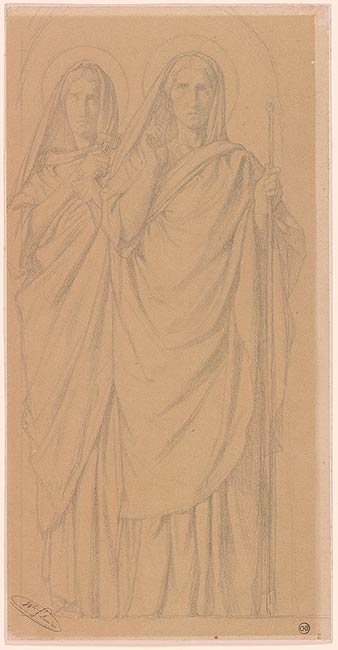

Hippolyte Flandrin, along with his brother Paul, was among the pupils of Ingres who achieved a measure of success. After winning the Prix de Rome, he developed a specialty in religious scenes while in Italy, and upon his return to France began receiving more commissions for decorative schemes than he could manage. His style was shaped by Raphael and the Italian masters he studied while abroad, which allowed him to adapt the manner associated with Ingres to the taste of a new generation.
Founded in the third century and considered the oldest church in Paris, St. Germain des Pres preserves a range of decorations from the Romanesque to Flandrin's decoration of the nave. Flandrin began work decorating the church in 1842 and would continue until he died in 1864, ultimately producing eighty-five paintings for the project. His work on the nave decoration began in 1856. He produced twenty biblical scenes surmounted by monumental single or double figures of biblical figures using an encaustic technique that yielded a subdued effect in keeping with neoclassic taste.
This study outlines two figures for the upper register of the left wall of the nave. Deborah, at front, was an Israelite woman who became a leader during a war with the Canaanites. Her strategy caused the Canaanite general Sisera to flee the battlefield and seek refuge with Jael, seen here behind Deborah. Jael fed Sisera, and when he fell into a deep sleep, she used a hammer to put a tent peg into his skull and kill him.
Atelier stamp at lower left corner (Lugt 933); unidentified collector's mark "C de J" in a circle in black ink at lower right corner.
Inscribed on verso in graphite: “Jahel et Débora par Hippolyte Flandrin en 1863 non figure cachet de la Vte de 1865. Etude dessinée par St. Germain-des-Prés au dessous du passage de la mer rouge, décor de la nef mur de gauche. Voir J. Goncourt pg 129 et 151 in H. A. et P. Flandrin.”
Carlson, Eric G., 1940-2016, former owner.
